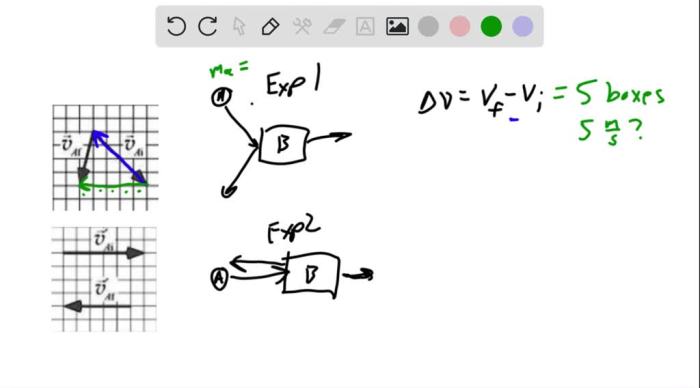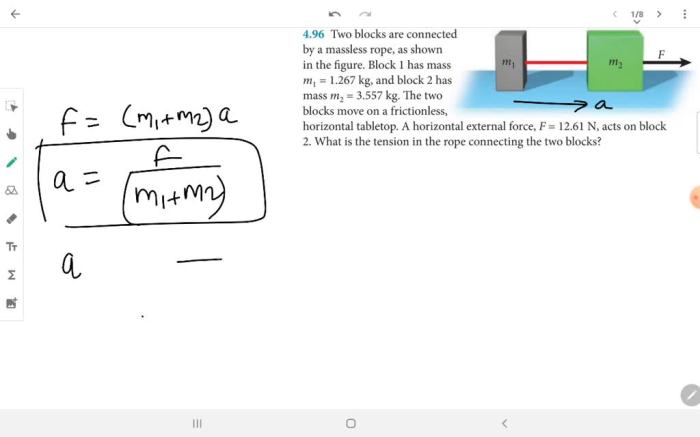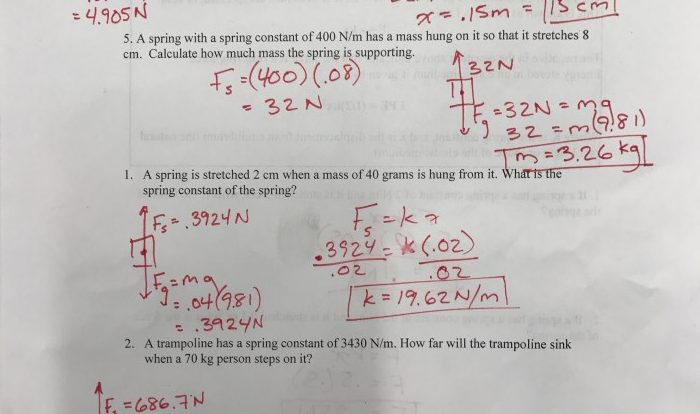When two objects are arranged on a level frictionless table, they embark on a captivating dance governed by the fundamental principles of physics. This scenario provides a fertile ground for exploring the intricate interplay of forces, motion, and conservation laws, offering valuable insights into the behavior of objects in a frictionless environment.
The absence of friction on the table surface eliminates a significant force that typically impedes motion, allowing the objects to move freely in response to the forces acting upon them. This simplified system enables us to isolate and analyze the fundamental principles that govern the motion of objects, making it an ideal setting for studying classical mechanics.
Two Objects on a Level Frictionless Table: Two Objects Are Arranged On A Level Frictionless Table

A level frictionless table provides an ideal environment to study the motion of objects without the influence of friction. This scenario allows us to analyze the fundamental principles of motion and interactions between objects.
Initial Conditions
Consider two objects arranged on a level frictionless table. The objects have distinct masses (m1 and m2) and shapes (e.g., spheres, cubes). They are initially placed at specific positions (x1, y1) and (x2, y2), with orientations (e.g., angles of rotation).
Interactions between Objects
The objects may interact with each other through gravitational force, depending on their masses. These interactions can result in changes in their motion and orientations.
Motion of Objects, Two objects are arranged on a level frictionless table
The objects will move according to Newton’s laws of motion. Their initial velocities and accelerations will determine their trajectories. We can analyze the displacement, velocity, and acceleration of each object over time.
Conservation Laws
The conservation of momentum and energy principles apply in this scenario. The total momentum and energy of the system remain constant throughout the interactions.
Experimental Design
To investigate the motion of objects on a frictionless table, we can design an experiment using materials such as a smooth table, objects with known masses, motion sensors, and data acquisition devices.
Expert Answers
What is a frictionless table?
A frictionless table is a hypothetical surface that offers no resistance to the motion of objects placed upon it. In reality, all surfaces exhibit some degree of friction, but for the purposes of theoretical analysis and experimentation, the concept of a frictionless table provides a valuable tool for studying the fundamental principles of motion.
How does the absence of friction affect the motion of objects?
Friction is a force that opposes the motion of objects in contact with a surface. In the absence of friction, objects can move more freely and with less resistance. This allows them to accelerate more easily and maintain their motion for longer periods of time.
What are the key principles that govern the motion of objects on a frictionless table?
The motion of objects on a frictionless table is governed by Newton’s laws of motion and the conservation laws of momentum and energy. These principles provide a framework for understanding how objects interact with each other and how their motion changes over time.



